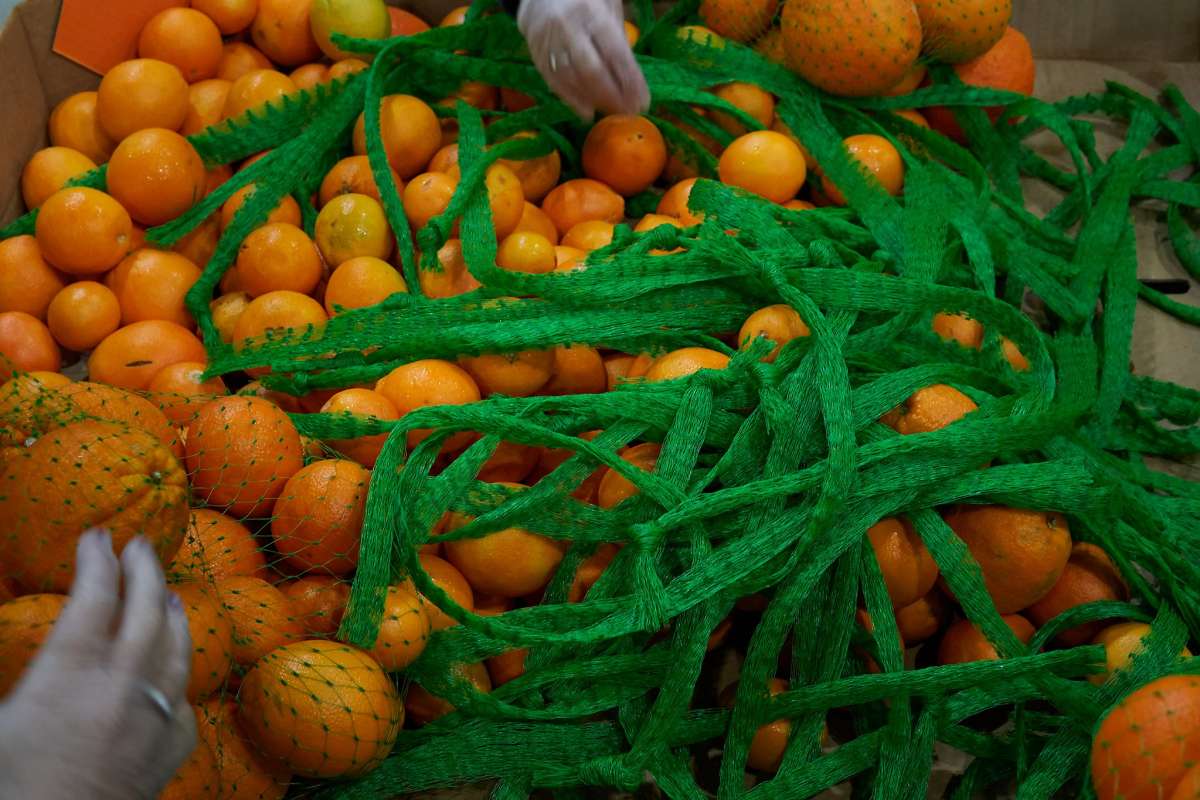
Unemployment is down and the economy is strong, but that doesn’t mean hunger has ebbed across the Bay Area.
Local food banks have not seen any drop in demand for free groceries over the past few years, an indication that the incomes of the working poor aren’t keeping up with rising rents and other costs.
“The outward appearance, especially in affluent communities, is that everything is fine,” said Larry Sly, executive director of the Food Bank of Contra Costa and Solano. “The numbers of people coming to us has not dropped a bit.”
The families finding their way to Bay Area food banks frequently have an individual in the household with a job, making maybe $12 an hour.
“That’s well over minimum wage, it’s just not enough to get by on,” he said. “People walking away with $40 to $50 worth of groceries, that’s a big impact on a budget.”
In that sense, many of the people coming to the food banks are different from those who came in the past, and that requires extra effort to communicate to the broader community that people still need assistance, that donations still matter, and it’s a year-round effort, food bank officials said.
“We’re doing this all year,” said Suzan Bateson, executive director of the Alameda County Community Food Bank. “We are serving 116,000 this month, next month and the month after.”
Sly’s agency serves 190,000 people monthly.
Donations ebb and flow, however, but for the 30th straight year, The Chronicle’s Season of Sharing Fund has been a reliable source of help, contributing more than $19 million to food banks in the nine Bay Area counties.
$1 paid out translates into $6 worth of food for families
Last year alone, the fund distributed $1.1 million to the food banks in Alameda, Contra Costa, Marin, Napa, San Francisco, San Mateo, Santa Clara, Solano and Sonoma counties to help buy produce and other food products.
Food donations are happily accepted, but the money helps fill in the gaps, purchasing protein and produce to ensure families get a wide array of nutritious meals.
Farmers and distributors often provide fresh fruits and vegetables at a big discount, requiring the food banks to pay only a small fee — up to 12 cents a pound — as well as transportation. In addition, there are storage costs.
Still, $1 paid out translates into $6 worth of food for families, Bateson said.
“Every dollar counts because it brings more apples, oranges and other vegetables,” Bateson said. Needy families, she said, don’t always have the luxury to buy those kinds of food items.
“If you’ve got a few dollars in your pocket and you’ve got three hungry kids in back, you’re not going to buy four apples, you’re going to go through the drive-through,” she said.
Raising awareness about the ongoing need is a challenge, but food banks also have had to figure out how to make sure the food gets to all who need it. Not everyone can get to a food bank when they’re open, Sly said.
In Contra Costa, Sly’s agency brings produce into communities, parking big trucks — like a mobile farmers’ market — at specific locations twice a month so residents don’t have to travel far to get their share of the 11 million pounds of fruits and vegetables distributed by the food bank each year.
And the Alameda County Food Bank is planning to open food pantries at UC Berkeley and Cal State East Bay in the coming months, making the food easily available to struggling students.
“I want to know how you can pass physics or advanced calculus or even freshman English with a malnourished body,” Bateson said.
The idea behind the campus effort is to demystify food pantries and bring them out of the shadows, she said, to tell young people, “It’s OK. Everybody needs help now and then.”
The free food is never really free,” Sly said. With Season of Sharing, “we’re able to meet those costs so that thousands of pounds of food are available to the people in our community.
Having the Season of Sharing Fund as a reliable source of revenue has allowed the food banks to stretch their resources and find more ways to reach those in need, officials said.
In addition to the support provided to food banks, the fund also helps Bay Area families through hard times, making direct payments to service providers, including landlords or medical providers.
But The Chronicle’s annual fund is among the largest supporters of local food banks.
“The free food is never really free,” Sly said. With Season of Sharing, “we’re able to meet those costs so that thousands of pounds of food are available to the people in our community.”
“It’s real money,” he said. “It makes a big difference.”
This story was written by Jill Tucker, the K-12 education reporter for the San Francisco Chronicle. You can follow her on Twitter: @jilltucker.
